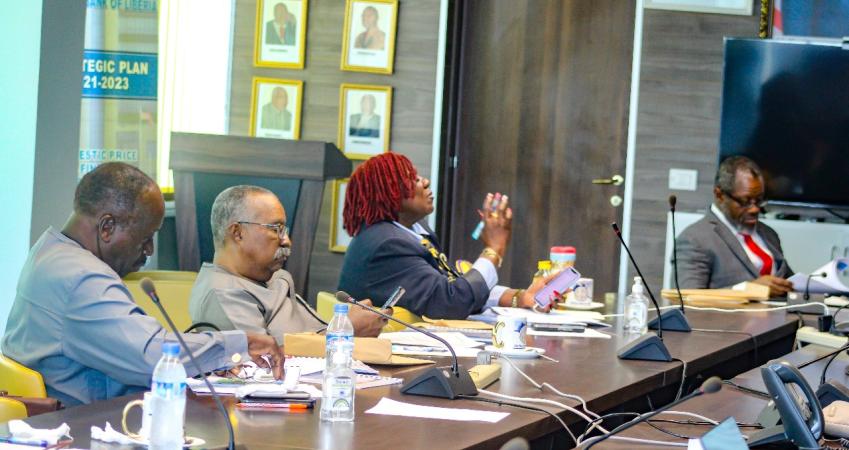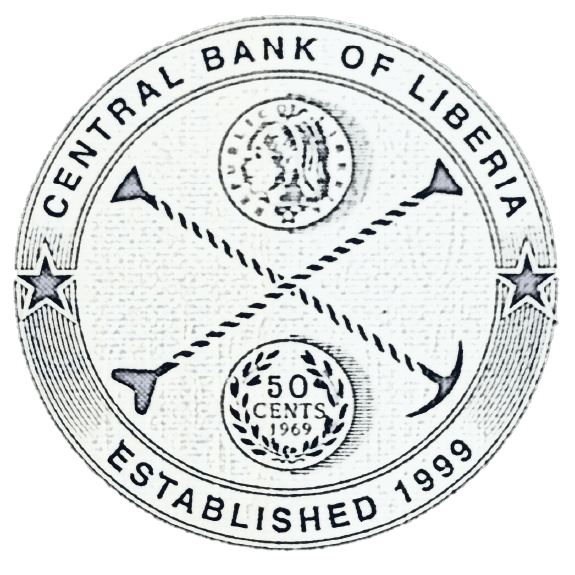
The Central Bank of Liberia (CBL) Board of Governors held its first Monetary Policy Committee (MPC) meeting of 2024 on January 18th. The Board of the CBL, proxying for the MPC, assessed the domestic macroeconomic condition and the global economy for the fourth quarter of 2023 to guide the policy decisions for the quarter ahead.
Global Macroeconomic Developments
The Board acknowledged that the global economy demonstrated resilience characterized by divergence in regional growths in 2023 and expressed concern about the prospect of recovery, given that global growth is projected to further moderate in 2024 to 2.9 percent. Although moderating, global inflation remains uncomfortably above central banks' comfort zone, the Board noted. Hence, maintaining high interest rate remains appealing to many central banks in response to containing inflation as the global economy adjusts to the increasing wave of geopolitical tensions. In addition, the Board also acknowledged that high interest rates push borrowing costs upward and heighten debt burdens, particularly in developing and fragile economies; thus, raising concerns about long-term debt sustainability.
In most ECOWAS economies, interest rate remains high to contain inflationary pressure, the Board further noted.
Movement in commodity prices was mixed in the fourth quarter. Metal prices increased while crude oil and food prices as well as agricultural produce fell during the quarter, posing implications for foreign exchange movement in the domestic economy, the Board noted.
Domestic Macroeconomic Developments
Although real GDP growth moderated in 2023 to 4.6 percent, from 4.8 percent in 2022, the assessment showed that real GDP growth expanded in the fourth quarter, largely attributed to consumption and monetary indicators. Reserve money and private sector credit were the major factors driving the growth in monetary indicators, while beverage consumption and imports were the key drivers of growth in the consumption indicator. Production activity moderated; but gold and diamond production rose during the quarter, reflecting favorable climatic condition. In addition, economic activity is anticipated to be robust as real GDP is projected to increase to 5.3 percent in 2024, largely as a result increase growth in the agriculture and fishery sector of the economy. The agriculture & fishery sector is projected to grow at 5.9 percent, from 0.7 percent recorded in 2023.
Despite the moderation in headline inflation to 10.5 percent during the quarter, the Board noted that prices are expected to remain relatively high in the first quarter of 2024, thus, inflation is projected to rise to 11.4 percent with a plus/minus 2.0 percentage points symmetric band. Additionally, it is worth indicating that political stability is expected to improve the business climate and investors’ sentiments, hence, robust economic activity in the first quarter would induce higher demand for FX to service import payments and further induce higher inflation via exchange rate depreciation.
The Banking Sector
Generally, the Board observed that the banking industry’s key balance sheet items reported growth during the assessment period, as the industry remained capitalized and liquid. Total assets and capital expanded, whilst total loans and advances to the economy moderated. However, the assessment, as noted by the Board, showed an increase in credit to the private sector. The Board further noted that the relatively constant concentration of loans to trade, personal, services, construction, and other subsectors crowd out investment to the manufacturing and agricultural sectors, thus, constraining their growth. Furthermore, the Board was concerned about the 2.6 percentage points rise in the ratio of non-performing loans (NPLs) to total loans and advances, to 18.5 percent above the regulatory threshold of 10.0 percent.
Monetary Aggregates and Financial Markets Developments
Monetary aggregates, as noted by the Board, were relatively expansionary compared to the previous quarter. Consequently, the monetary condition index (MIC) was largely loose, more than doubling to 10.4 percent from the 4.9 percent reported in the previous quarter. Broad money (M2) supply increased by 9.2 percent to L$222.0 billion, according to preliminary statistics, on account of a rise in both narrow money (M1) and quasi-money. Also, there was growth in currency in circulation (CIC) including currency outside banks (COB). The Board observed that retail subscription of CBL Bills rose by 16.2 percent, however, institutional investors subscription contracted largely on account of draw down on commercial banks’ deposits by the public during the festive season. Cognizant of the implication for monetary policy, the Board noted that the increase in currency outside bank could constrain future exchange rate stability and attainment of low inflation on the Liberian economy.
External Sector and Exchange Rate Developments
According to provisional statistics, the Board was concerned about the developments in the external sector, characterized by unfavorable merchandise trade deficit, to 10.4 percent of GDP on account of 21.2 percent increase in merchandise imports that outweighed the 10.4 percent increase in export receipts. It was noted that the gross international reserves (GIR) fell by 6.5 percent to US$451.0 million. The month of import covers during the fourth quarter compare with the third quarter of 2023 narrowed by 1.1 month to 1.7 month mainly due to a sharp rise (over 230 percent) in the payments for mineral, lubricants and fuel (especially petroleum and bitumen). However, the Board noted that the net workers’ remittance inflow was robust during the quarter, increasing by 12.0 percent to US$188.5 million.
The Board observed a modest depreciation in the exchange rate during the quarter. Both the period average and end-of-period exchange rates depreciated by 1.3 percent and 0.9 percent to L$187.98 per US$1.00 dollar and L$188.50 per US$1.00, respectively. The narrow rate of depreciation relative to the previous period was partly on account of the tight monetary policy stance of the Bank in addition to the rise in net remittance inflows, the Board noted.
MPC Decisions
Following the closing of the deliberations on the fourth quarter assessment, the Board of Governors took note of the foreign exchange implications of the moderation in global headline inflation, the decline in crude oil and food prices as well as the reduction in agricultural produce. Furthermore, the Board welcomed the quarterly growth estimates and expressed concern about the growth in the monetary condition index and its ramifications on expected inflation.
Thus, consistent with its mandate and in support of maintaining financial and macroeconomic stabilities, the Board decided on the following:
- To maintain the Monetary Policy Rate (MPR) at 20.0 percent, which is above the projected inflation and depreciation rates until the next assessment, as a measure in response to the cooling of inflationary pressure;
That the monetary authority should strengthen coordination with the fiscal authority on liquidity management in support of macroeconomic and financial stability; and
- That collaboration be enhanced with other agencies of gov’t to reinforce policy for the wider acceptability of transactions and payments in L$ by businesses across the country, especially concessional companies, private schools, and the hospitality sector.
In view of the above, the CBL reassures the public and its partners that the Bank will continue to monitor developments in the domestic and global economies in accordance with its mandate to implement policies that are appropriate.
Signed: _______________________________________
J. Aloysius Tarlue, Jr.
Executive Governor & Chairman of the MPC
